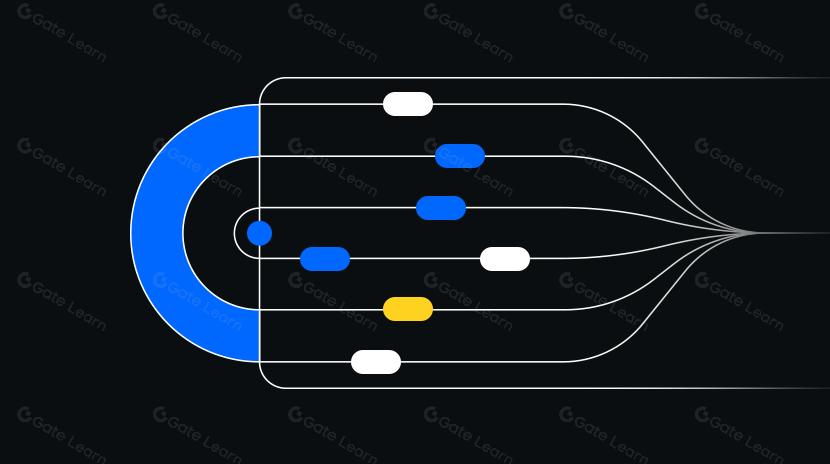Paparazzi Up Over 60% in 24 Hours | Monad Launches Multiple Ecosystem Initiatives
Crypto Market Overview
- BTC (0.32% | Current price 91,028 USDT): After several days of wide-range consolidation, BTC saw a clear surge with increased volume on the 27th, briefly pushing up to this cycle’s local high near 91,942 USD, marking a new recent high. Short-term moving averages (MA5, MA10) turned sharply upward and formed a bullish alignment. The price quickly broke away from the dense moving-average zone and remained firmly above the MA30, indicating that bullish momentum continues to dominate in the short term. Following the surge, BTC faced resistance at higher levels and saw a mild pullback, yet it continues to consolidate above 91,000 USD. During the retracement, trading volume did not expand significantly, suggesting limited selling pressure and a structure more aligned with high-level consolidation.
- ETH (-2.19% | Current price 3,000 USDT): After several days of consolidation, ETH experienced a rapid upswing on the 27th, with the price climbing to a high near 3,071 USD, setting a new short-term peak. Trading volume increased noticeably during the rally, and short-term moving averages (MA5, MA10) turned upward and formed a bullish alignment. The price also successfully broke above and stabilized over the MA30, indicating that bullish forces held short-term dominance. After hitting the resistance zone above 3,070 USD, ETH retraced and is now hovering around 3,000 USD, entering a phase of high-level sideways consolidation.
- Altcoins: Most major altcoins remain slightly down, while overall market sentiment leans toward “neutral” or “buying.” Today’s Fear & Greed Index prints at 25, still in the Extreme Fear zone, indicating that broader market sentiment has yet to recover.
- Macro: On November 27, the S&P 500 rose 0.69% to 6,812.61; the Dow Jones increased 0.67% to 47,427.12; and the Nasdaq gained 0.82% to 23,214.69. As of 10:50 AM (UTC+8) on November 28, spot gold is trading at 4,187.34 USD per ounce, up 0.71% in the last 24 hours.
Trending Tokens
BBT – BabyBoomToken (+83.14%, Circulating Market Cap: $107M)
ccording to Gate market data, the BBT token is currently priced at 0.289 USD, up approximately 83.14% in the past 24 hours. BabyBoomToken (BBT) is a blockchain-based project designed to address the global decline in birth rates. BBT attracts users by rewarding participation in family-planning–related activities such as pregnancy, childbirth, and parenting. Users can earn BBT through various activities within the BabyBoom and Sellon dApp ecosystems and redeem the tokens for real-life rewards. By leveraging blockchain and reward mechanisms, the project aims to provide tangible support for families and promote community growth globally.
BBT’s significant surge over the last 24 hours was driven by multiple factors. First, as a small-cap token, BBT exhibits high price elasticity, making it prone to rapid upward movements when trading volume expands sharply. Second, its unique concept—using blockchain incentives to promote family planning and address declining global birth rates—has captured market attention. Rising discussions on social media and within communities have brought in sentiment-driven buying. Additionally, increased activity in the BBT ecosystem’s reward mechanisms and dApp engagement has boosted user participation and demand for the token. Overall, the combination of trending narratives and rising trading volume resulted in BBT’s strong short-term rally.
PAPARAZZI – Paparazzi Token (+63.50%, Circulating Market Cap: $34.71M)
According to Gate market data, PAPARAZZI is currently priced at 0.01042 USD, up 63.50% in the past 24 hours. The Paparazzi platform allows users to create personal blogs, share diverse content, and mint their posts as NFTs for trading within the Web3 ecosystem. Users can write articles on topics such as blood types, astrology, fortune-telling, MBTI, and more, converting this content into NFTs to generate income. Paparazzi is more than just a blogging platform—it is a new model that enables users to create digital assets and earn economic value through sales.
The sharp increase in PAPARAZZI over the past 24 hours is primarily driven by rising trading volume and renewed market attention. Backed by a Web3 ecosystem centered on content creation and social interaction, the token has gained visibility through narratives involving content publishing, NFT engagement, and creator incentives. Recent increases in community activity or greater exposure for the platform may have attracted more short-term speculative capital. Due to the token’s relatively small circulating supply, new buying flows can quickly push the price higher, creating sustained upward momentum. Overall, the recent surge reflects a combination of improved sentiment and liquidity, with short-term hype fueling PAPARAZZI’s strong 24-hour performance.
SQD – Subsquid (+51.98%, Circulating Market Cap: $14.80M)
According to Gate market data, the SQD token is currently priced at 0.09211 USD, up approximately 51.98% in the past 24 hours. Subsquid Network is a decentralized data infrastructure project aimed at providing Web3 developers and applications with cross-chain, scalable, high-performance on-chain data indexing and querying services.
SQD’s rise over the past 24 hours has been driven by improving sentiment toward the Web3 infrastructure sector and increased attention from short-term capital. As demand for multi-chain ecosystem data grows, expectations for decentralized data services have strengthened. At the same time, recent increases in trading volume have fueled additional buying pressure, giving SQD strong short-term upward momentum. Infrastructure-related projects typically have robust narrative support, making them more likely to attract capital during favorable sentiment or news cycles. This combination of sector tailwinds and liquidity inflows led to SQD’s significant 24-hour gain.
Alpha Insights
MegaETH Issues Full Refund After Pre-Deposit Confusion, Plans to Relaunch Cross-Chain Bridge
MegaETH announced that it will issue full refunds for all user funds deposited into the Pre-Deposit Bridge. The program was originally intended to preload liquidity for the upcoming USDm launch, but a series of technical errors and operational mistakes caused the process to devolve into a chaotic and disorganized fundraising event. The team admitted that the execution was “too rushed,” citing issues such as using the wrong SaleUUID in the contract, overly restrictive traffic limits imposed by the KYC provider, and fundraising windows opening at random times—all of which resulted in an extremely unfair user experience. All funds will be returned through a newly audited smart contract, and the team emphasized that user funds were never at risk.
During the confusion, the fundraising cap was repeatedly and mistakenly adjusted:
Initially, the 250 million USD limit was filled within minutes by users refreshing the page. The team then attempted to increase the cap to 1 billion USD, but a multisig transaction was executed prematurely by an external party, causing further loss of control. Later adjustments to 400 million and 500 million USD also failed to keep up with the rapid influx of deposits. Ultimately, the team decided to halt the process and issue full refunds. MegaETH stated that it will reopen the USDm and USDC-to-USDM conversion bridge with stricter controls in place. The incident has increased pressure on the project’s upcoming mainnet launch and roadmap execution.
Monad Mainnet Goes Live, Unlocking Opportunities Across Its Ecosystem
Following the launch of the Monad mainnet, multiple ecosystem campaigns have been initiated, offering users various yield opportunities including deposit products, on-chain staking, trading rebates, and play-to-earn blockchain gaming. Among these, the MON savings program launched in collaboration with Telegram—offering a 17% APY on MON deposits within the built-in wallet—has drawn the most attention. Users can deposit MON to earn daily interest that is automatically compounded.
Additionally, several ecosystem projects such as FastLane Labs, Magma, and Folks Finance have launched MON staking points programs or high-yield deposit plans, with some annualized returns exceeding 30%. These initiatives provide users with a combination of “stable on-chain yield + airdrop potential.” Platforms like Merkl, Accountable, and Curvance are also offering stablecoin farming programs to mine MON tokens, with APYs surpassing 60%, further enhancing Monad’s capital attraction.
Ethereum Raises Block Gas Limit to 60 Million, Throughput Hits New High Ahead of Fusaka Upgrade
Ethereum’s block gas limit has officially increased from 45 million to 60 million after receiving approval from a majority of validators, effectively doubling the network’s base capacity within a year. The change is driven by long-standing requests from developers and users, supported by improvements such as EIP-7623, extensive client performance optimizations, and multiple rounds of testnet validation, ensuring stable block propagation even under higher loads. An Ethereum Foundation researcher noted that this marks a significant milestone in the community’s ongoing scaling effort. Meanwhile, Layer-2 networks have also reached new throughput records, with total network TPS hitting 31,000 over the past 24 hours.
The increase comes just days before the upcoming Fusaka hard fork, which will introduce the critical PeerDAS data availability upgrade and further enhance rollup scalability. Vitalik emphasized that future scaling strategies will become more targeted, potentially including gas cost adjustments for certain computation-heavy operations to improve effective block capacity while maintaining network efficiency. With Fusaka scheduled to go live on December 3, the Ethereum ecosystem is entering a new phase of performance improvements and base-layer expansion.
References
- Gate, https://www.gate.com/trade/BTC_USDT
- Farside Investors, https://farside.co.uk/btc/
- Gate, https://www.gate.com/trade/ETH_USDT
- Farside Investors, https://farside.co.uk/eth/
- Gate, https://www.gate.com/crypto-market-data
- Investing, https://investing.com/indices/usa-indices
- Investing, https://investing.com/currencies/xau-usd
- CoinGecko, https://www.coingecko.com/categories
- Coinbase, https://www.coindesk.com/markets/2025/11/28/megaeth-s-usd500m-pre-deposit-turns-into-a-full-rewind-after-missteps-pile-up
- Odaily, https://www.odaily.news/post/5207813
- The Block, https://www.theblock.co/post/366246/layerzero-foundation-proposes-110-million-acquisition-of-stargate-bridge-as-token-struggles
Gate Research is a comprehensive blockchain and cryptocurrency research platform that provides deep content for readers, including technical analysis, market insights, industry research, trend forecasting, and macroeconomic policy analysis.
Disclaimer
Investing in cryptocurrency markets involves high risk. Users are advised to conduct their own research and fully understand the nature of the assets and products before making any investment decisions. Gate is not responsible for any losses or damages arising from such decisions.
Related Articles

Exploring 8 Major DEX Aggregators: Engines Driving Efficiency and Liquidity in the Crypto Market

What Is Copy Trading And How To Use It?

How to Do Your Own Research (DYOR)?

What Is Technical Analysis?

12 Best Sites to Hunt Crypto Airdrops in 2025
